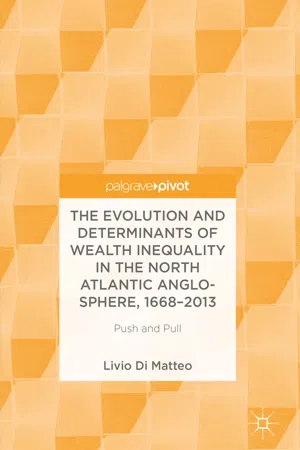Economic inequality , with its effects and policy implications, is now a leading topic of scrutiny in social science research as well as media attention. One only needs to witness the widespread media coverage that accompanies the release of international asset distribution data such as the global wealth reports done by Credit Suisse.1 It is an issue that increasingly dominates economic history and current policy as evidenced by the work of scholars like Thomas Piketty (2014)2 and the incessant global preoccupation with the wealth and income shares of the top 1 percent of distributions.3 Indeed, the concern with inequality receives further impetus as additional research also generates empirical links between economic inequality and social outcomes such as homicide rates and health status.4
Piketty’s provocative thesis that lower economic growth rates combined with a rate of return to capital and assets greater than the rate of economic growth generate growing inequality is pessimistic. It is certainly a more ominous result for long-term human economic welfare when compared to the sunnier Kuznets curve hypothesis of slowing post-industrialization growth and greater economic equality. On the other hand, other research suggests that the dispersion and mean of inequality across countries, at pre-industrial times and today, are actually similar, suggesting there actually has been little long-term change when it comes to inequality.5
Indeed, it would seem the direction of the relationship between industrialization , economic growth, and economic inequality over time is a key question. Moreover, all of this work also suggests that the initial conditions and economic and political institutions of a society matter for the long-term structure and evolution of its national wealth holding as well as the impact of explicit government policies in affecting these distributions.6 Yet, ultimately, any significant understanding of the long-term structure and evolution of inequality requires the methodical and consistent compilation of reliable long-term data.
This empirical contribution focuses on wealth inequality trends in the North Atlantic Anglosphere7 countries of Canada , the United Kingdom, and the United States over the period from 1668 to 2013—a longer-term perspective than generally used when wealth inequality is discussed. It is important to put current dimensions of wealth inequality into historical context by looking at performance over the long run that involves centuries rather than simply a few decades. More importantly, this contribution compiles a substantial amount of data on estimates of wealth inequality.
Over the course of nearly four centuries, the process of economic change, growth, and industrialization has generally served to push wealth inequality upward, while an assortment of other economic factors, shocks, and policy responses have either worked to reinforce the upward trend or served to mitigate inequality by pulling it back down. While wealth inequality is generally high, it has declined over the long term and, unlike income inequality , has not been experiencing as pronounced of an international rebound in the developed countries since the mid-twentieth century—with the notable exception of the United States. Indeed, the American experience with respect to rising wealth inequality is different not only from European countries but also with respect to its Atlantic Anglosphere compatriots of Canada and the United Kingdom.
An advantage of using these North Atlantic Anglosphere countries is that they share commonalities across history, political structure, language, institutions, and economic as well as cultural features, given the original colonial relationships shared by both Canada and the United States with respect to Great Britain. All three of these countries have been at the forefront of economic development with high levels of real per capita GDP as well as high rates of economic growth.8 This allows for a comparison of trends, with more focus on long-term policy, with political and societal choices as additional factors determining differences in the evolution of wealth inequality—in a sense, a more controlled historical experiment.
There are also important economic links between these countries, especially with respect to Canada and both the United States and the United Kingdom. Prior to the Great Depression, Canada’s most important trade partner was the United Kingdom, whereas by the end of the twentieth century, it was the United States. In 1900, 54 percent of total Canadian exports were to the United Kingdom while 36 percent were to the United States.9 By the early twenty-first century, Canada’s exports to the United States had grown to account for nearly 80 percent of its exports, whereas those to the United Kingdom had declined to about 3 percent.10
Canadian trade with the United States grew during the course of the twentieth century to account for two-thirds of its exports by 1970, but then accelerated with the onset of free trade during the 1980s. Despite increasing economic integration with the United States via Canada -US F...
